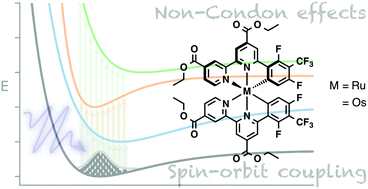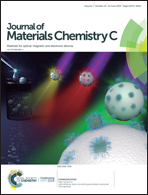Capturing the interplay between spin–orbit coupling and non-Condon effects on the photoabsorption spectra of Ru and Os dyes†
Abstract
In this work, we investigate the factors influencing the shape of the low-energy tail of the absorption spectrum of a homoleptic biscyclometalated ruthenium complex with terdentate ligands [T. W. Rees et al., Inorg. Chem., 2017, 56, 9903] by combining an advanced theoretical strategy and the synthesis of an analogous osmium complex. The theoretical protocol merges relativistic linear-response time-dependent density functional theory and the nuclear ensemble approach, permitting to shed light on the influence of spin–orbit coupling and non-Condon effects on the theoretical absorption spectra of these rather large metal complexes.

- This article is part of the themed collection: Functional Organic Materials for Optoelectronic Applications


 Please wait while we load your content...
Please wait while we load your content...